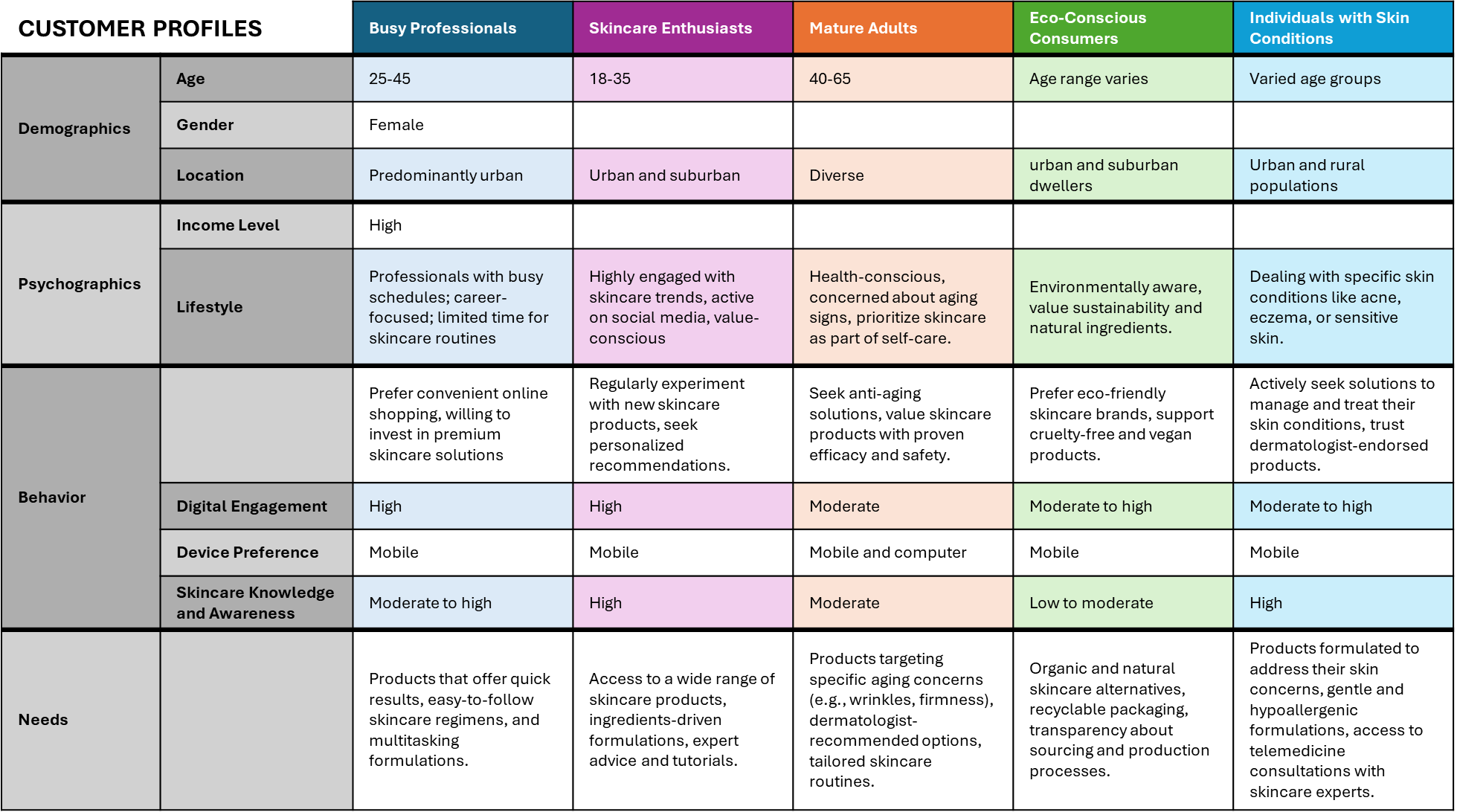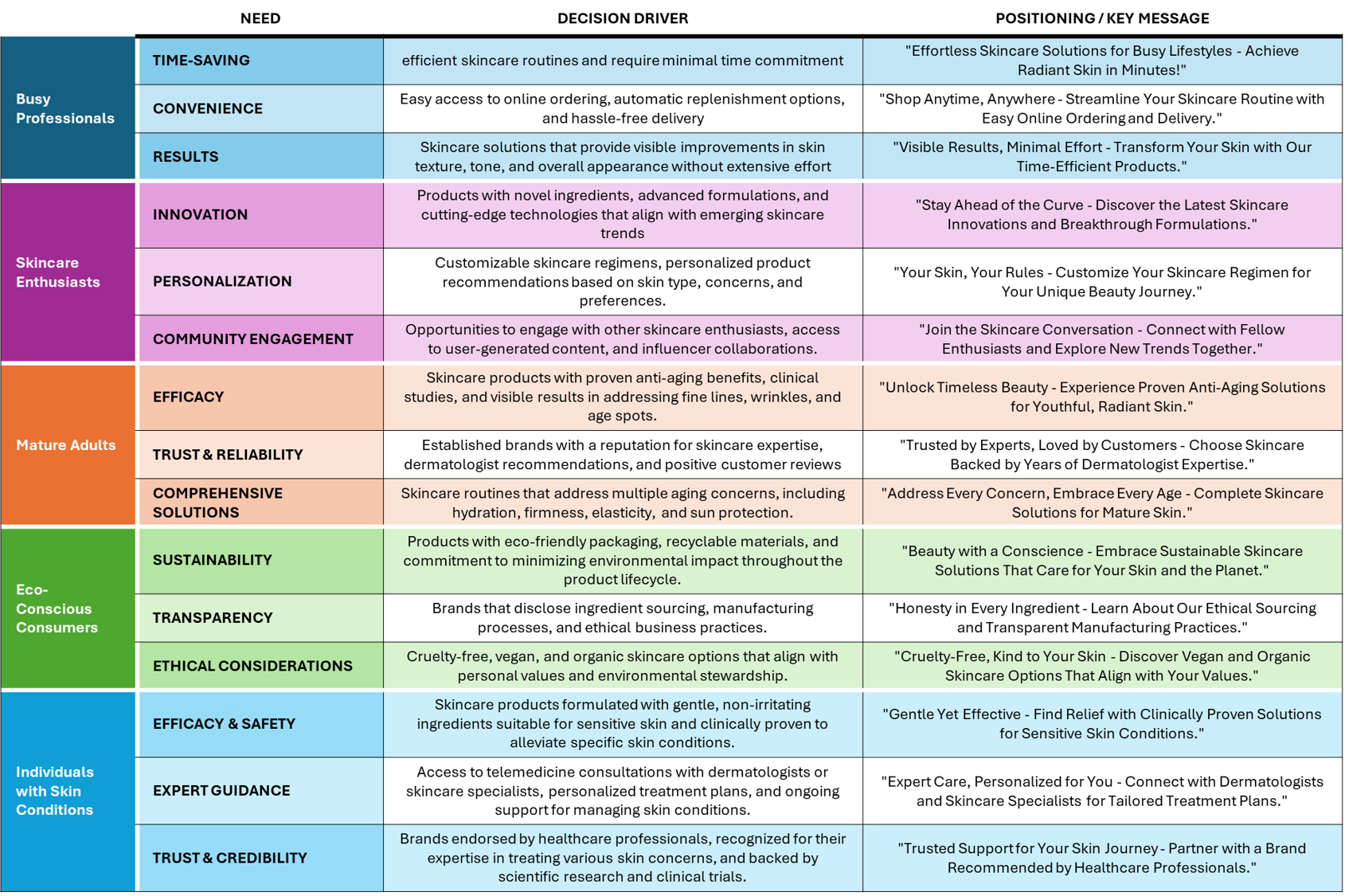Direct-to-Consumer Dermatology Offering
Case Study
A product marketing case study on a company that offers direct-to-patient products with a dermatology offering as part of their portfolio.
Written in 2024
Background
Company A offers direct-to-patient skincare services and products online, from the comfort of their home
Company A is the only company to offer telehealth care, at-home diagnostic testing, labs, and pharmacy services nationwide.
This is enabled by Company A’s vertically integrated platform that helps patients achieve their goals through a convenient end-to-end healthcare experience spanning from diagnosis, to delivery of medication, to ongoing care
Goals / Objectives
Develop a plan to align messaging across different channels and touchpoints
Streamline the go-to-market process and ensure synchronized efforts across teams
Approach to Messaging Alignment
I began by stating unknowns to help me understand anything that might be loosely defined:
-
Conduct an in-depth analysis of existing messaging frameworks and identify key areas for improvement.
Specifically considering brand promise, value proposition, target audience, positioning statement, customer personas, mission statement, and brand voice description
-
Collaborate closely with cross-functional teams, including product development, clinical, regulatory, and growth, to understand product features, benefits, and market positioning.
-
Through consumer research and feedback mechanisms, identify pain points, aspirations, and preferences of the target audience, shaping messaging that resonates with their needs and values.
Existing Customer Analysis:
Google analytics
Collaborate with sales and customer service teams
Surveys / interviews
Streamline Go-to-Market Strategy
Goals:
Introduce a structured go-to-market framework that encompasses pre-launch, launch, and post-launch activities.
Establish clear timelines, milestones, and responsibilities to ensure seamless execution across teams.
Integrate data-driven decision-making into the go-to-market process, leveraging customer feedback and market trends to optimize strategies and tactics.
Next Steps & Outcomes
Next Steps:
Integrate data-driven decision-making into the go-to-market process, leveraging customer feedback and market trends to optimize strategies and tactics.
Lead initiatives to harness qualitative and quantitative customer insights effectively.
Establish feedback loops and channels for continuous communication with consumers, enabling Company A to adapt its marketing strategies based on evolving needs and preferences.
Incorporate customer insights into product development and marketing efforts to ensure Company A remains agile and responsive to the dynamic healthcare landscape.
Outcomes:
Improved Brand Perception: The revamped messaging strategy enhances Company A's brand perception, positioning the company as a trusted partner in chronic condition management.
Enhanced Engagement: With synchronized go-to-market efforts and compelling communication journeys, Company A experiences increased engagement and conversion rates among its target audience.
Data-Driven Decision Making: By leveraging customer insights, Company A gains valuable intelligence about consumer behavior and preferences, enabling informed decision-making across all facets of the business.





